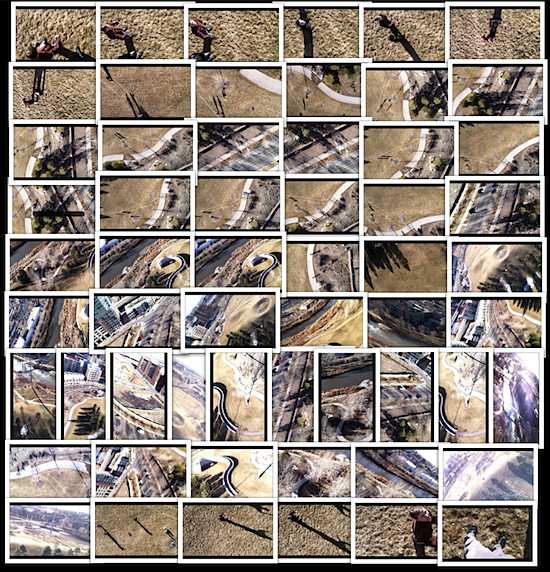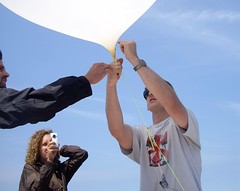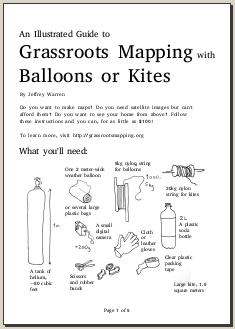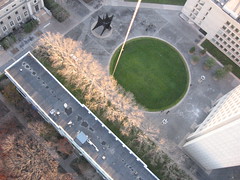PlaceMatters launches a test balloon with an iPhone attached
May 4th, 2011 by Jeffrey WarreniPhone Balloon Launch from PlaceMatters Videos on Vimeo.
This post is re-posted with permission from the PlaceMatters.org blog. The author, Ken Snyder, is the Executive Director of PlaceMatters.
Ken writes: At the GeoDesign conference in San Diego we heard mention of folks at MIT using helium balloons with cameras attached to take aerial pictures. Thinking this was a fabulous idea I decided to find out more and see if this was a technique we could easily incorporate into our projects.
The MIT connection turned out to be the MIT Center for Future Civic Media and their partnership with others to create Grassroots Mapping, a project and resource site to encourage citizens to use these balloons to generate maps of communities and their surrounding environment.
One application highlighted on the website is Gulf coast communities using the balloons to observe and report on last year’s BP oil spill. From Grassroots Mapping emerged the Public Laboratory for Open Technology and Science (PLOTS) which represents network of scientists and activists experimenting with accessible technologies for investigating and reporting on local environmental health and justice issues. PLOTS is a great example of an online platform bringing together citizens, scientists, social scientists, and technologists to collaboratively solve problems.
We too see a number of ways we could integrate balloon launches into our work including adding a bird’s eye perspective to our Walkshops or providing a unique medium for place-based art projects. The 3 minute video at the top of this blog documents our first balloon launch. Grassroots Mapping’s downloadable instructions on how to build your own helium balloon camera made the job easy.
At the time, we did not have a digital camera with the functionality of taking continuous pictures so I put huge faith into our knots and fishing line and sent up my iPhone in video mode. Since then we have acquired a GoPro sports camera that is capable of taking video or time-lapse pictures. The GoPro has the added advantage of having a wide angle lens. Total cost for our first balloon launch was $165, with the rental of the helium tank and the purchase of a 6 ft diameter balloon being the dominant expenses. The tank had enough helium for two launches.
Here is a poster of some of the images extracted from the video.













December 25th, 2011 at 4:01 pm
Your research is wonderful. I can’t believe that I hadn’t read this sooner.